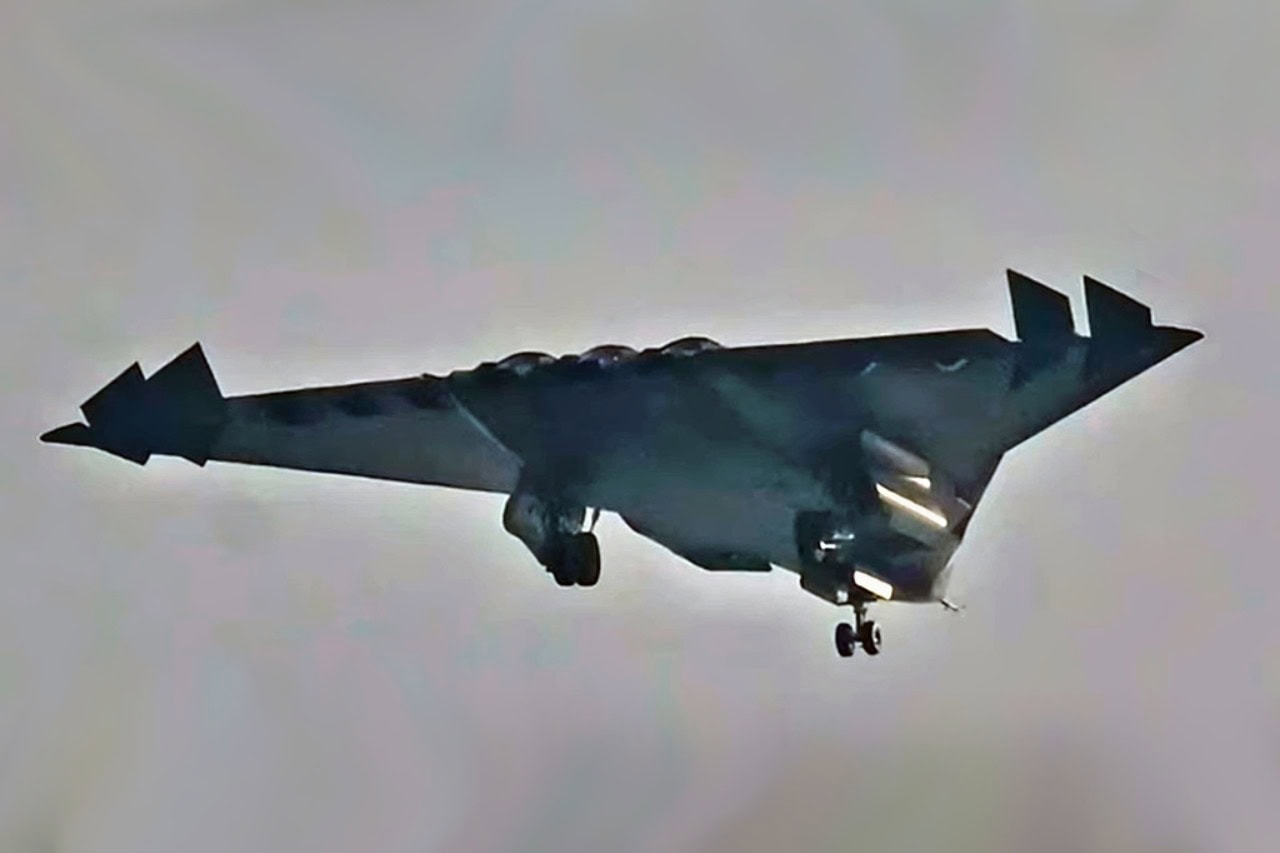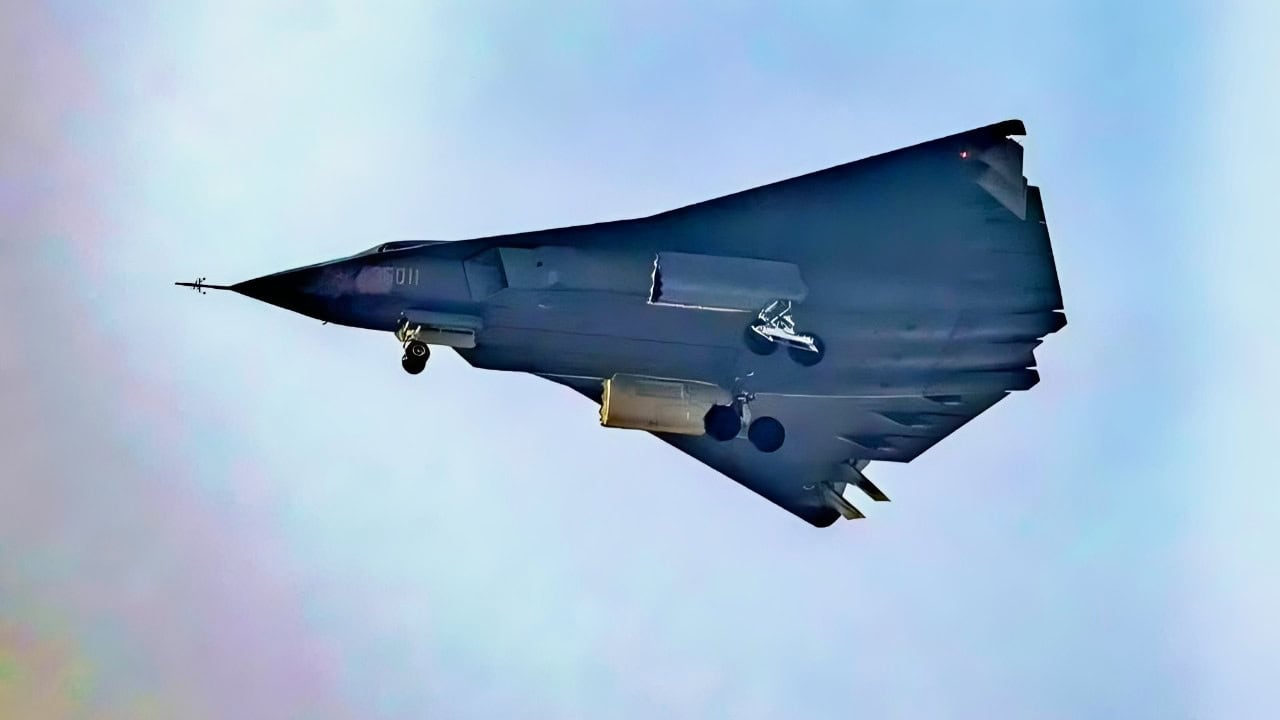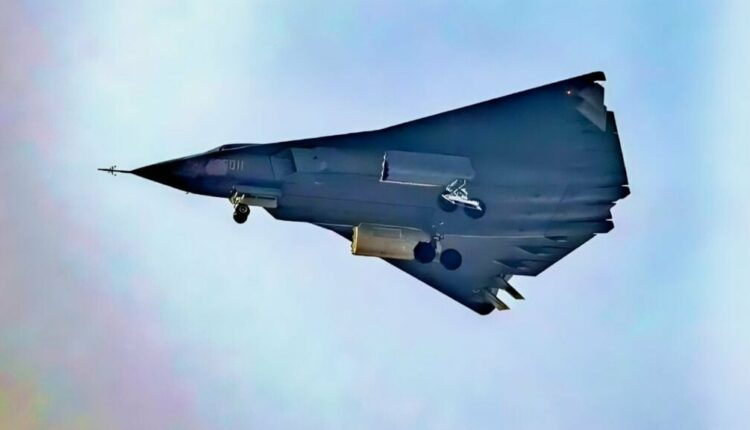©2021 Reporters Post24. All Rights Reserved.
A new video showcases impressive agility from China’s purported Chengdu J-36, a secretive sixth-generation stealth fighter concept featuring a unique tailless, triple-engine design. Advanced thrust vectoring appears evident.
While its capabilities remain unconfirmed by officials, the J-36 likely aims for air superiority and strike roles, potentially controlling drones.
-The video’s release is interpreted by some analysts as strategic signaling towards the current US administration under President Trump.
-This visible technological progress contrasts with ongoing debates, highlighted by a RAND report, questioning the PLA’s overall combat readiness versus its focus on internal CCP priorities.
China’s J-36 Looks Like a Game Changer?
The latest video from China shows the Chengdu J-36 performing what appears to be impressive agile turning maneuvers. However, judging how agile the aircraft turns is hard since there’s nothing against which to compare it.
It is a clear message to the United States that China is a force to be reckoned with. In the video, the aircraft conducts low-altitude passes and sharp banking enabled by advanced thrust vector control nozzles integrated into a tailless flying-wing design.
Defence 360 breaks down the two-minute video, covering everything from engine glow, nozzle geometry, and triple-engine layout indications that reveal a potent thrust-to-weight ratio and fluidic control mechanisms that preserve stealth.
The Latest on the Chengdu J-36
The Chengdu J-36 is a new addition to the stealth fleet. It is a triple-engine, tailless flying wing fighter that has been spotted five times recently. The fighter is a sixth-generation warplane thought to have excellent avionics.
The J-36 is believed to have great thrust, a high ceiling, and excellent speed for a stealth fighter jet.
However, the People’s Liberation Army Air Force (PLAAF) hasn’t publicly acknowledged the existence of either the J-36 or the J-50.
The design layout eliminates vertical stabilizers, significantly reducing the aircraft’s radar cross-section and enhancing its stealth capabilities. Advanced fly-by-wire flight control systems support the tailless design.

J-36 Fighter from China. Image Credit: Creative Commons.
This system reduces drag, enhancing fuel efficiency and operational range while increasing stability. These features make the J-36 well-suited for long-duration missions and high-speed dogfights against enemy fighters. Additionally, its delta-wing shape contributes to exceptional maneuverability at high speeds, a critical attribute for modern air dogfighting.
Three Engines Are Unique In the Modern Age
The aircraft features intakes positioned on top of the fuselage and along its sides, suggesting a unique tri-engine configuration. David Cenciotti, a former Italian Air Force officer and an aviation expert, said, “The trijet engine arrangement, with two engine intakes under the wings and a dorsally-mounted intake behind the cockpit, is a departure from conventional twin-engine setups seen in many contemporary fighters. This configuration may offer advantages in terms of thrust and redundancy.”
The J-36 is reportedly capable of achieving a maximum envelope speed of Mach 2.5, making it a high-speed platform suitable for air superiority and strike missions. While this increases its power and speed, it also increases complexity and fuel consumption.
The J-36 has internal weapons bays and is expected to be able to carry a significant amount of ordnance. It will likely be nuclear-capable and could serve as a “drone mothership” to control a flight of “loyal wingman” combat drones for better electronic warfare capabilities, the ability to forge ahead to identify ground targets, and the ability to assist with bomb damage assessment.

J-36 Fighter from China. Image Credit: X Screenshot.
“What is perhaps more interesting is that China decided to make these test flights public, and the timing of those releases,” Kelly Grieco, a senior fellow at the Stimson Centre, told the South China Morning Post. “Coming on the heels of [Donald] Trump’s re-election win, these public demonstrations seem an attempt to signal to Washington that China is a modern military power.”
Grieco noted that the use of three engines might compensate for the lack of a powerful single engine, like the WS-15, which is still maturing.
Is China Looking Outward, Inward, Or Both?
Back in February, a report from the US Think Tank Rand Corporation stated that China, despite its military modernizations, is not ready for war. The report claims that the primary motivation for the ruling Communist Party’s expansive push for military modernization is to retain its grip on power, not to fight an overseas foe.
“The PLA remains fundamentally focused on upholding Chinese Communist Party (CCP) rule rather than preparing for war,” wrote Timothy Heath, a longtime China expert with RAND, in the report titled “The Chinese military’s doubtful combat readiness.”
“China’s military modernization gains are designed first and foremost to bolster the appeal and credibility of CCP rule,” making war unlikely, Heath added.
Experts have scoffed at Heath’s ideas, but he makes some salient points.
China’s military spends 40 percent of its training time not practicing for combat but on political subjects, hurting overall combat readiness. Chinese units have two commanders: a military commander and a political commissar. The political commissar is more concerned with party loyalty than combat effectiveness, a common issue with the USSR.
There is plenty of doubt as to whether Heath’s theory is remotely correct, especially when the CCP is building stealth fighters and churning out navy vessels. And their stealth fighters are getting increasingly advanced.


